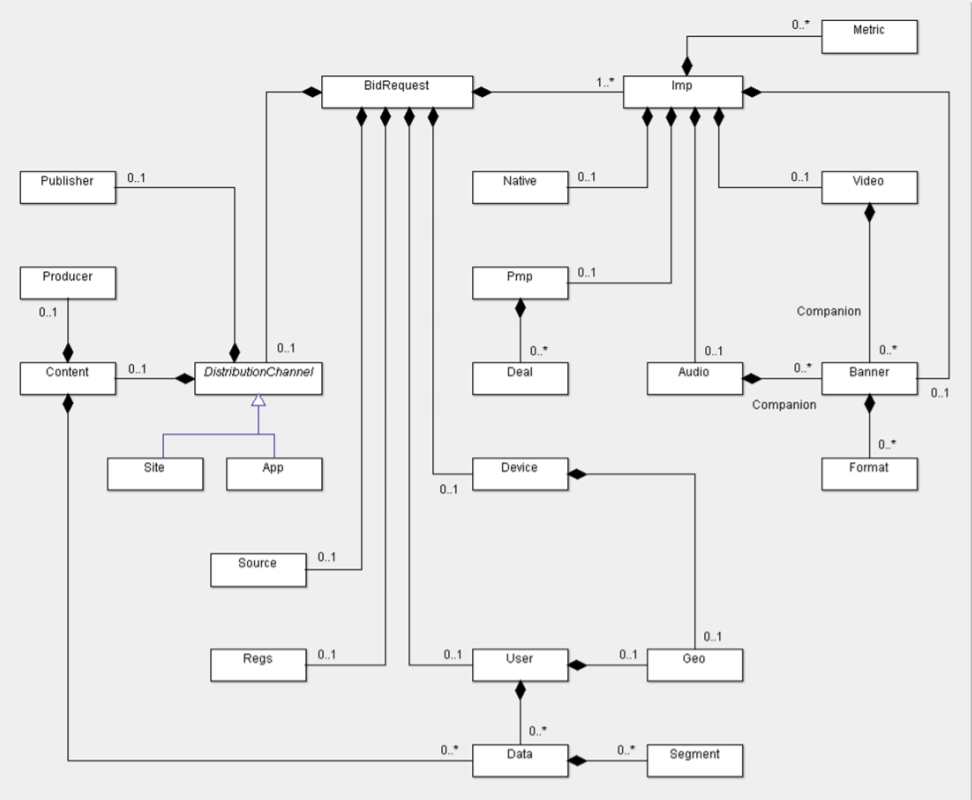Coming on the heels of my first blog post, “Online Advertising’s ‘Big One’ Problem”, I’ve got another big “O” to talk about in the second. Two of them, actually. Maybe it’s a trend.
Yesterday marked the first day of the 2019 Pride Winnipeg Festival, when the rainbow flag is raised and flown over City Hall. The celebrations will culminate with a rally at the Legislature, followed by the annual Pride Parade, leading marchers to the Pride Winnipeg Festival at the Forks, a two-day celebration of the many victories won – and yet to be won – by the Pride movement worldwide.
I must admit, I say “Pride movement” out of some degree of ignorance, as I find that the proper names, labels and acronyms to use in these discussions always seem – to borrow a phrase – quite fluid. I’m told that “GSRD” (short for Gender, Sexual, and Relationship Diverse) is gaining traction within the community, so I probably should have gone with that.
To mark the occasion – and because I don’t think I’ll find any better excuse to talk about it – this post focuses on an incredibly specific detail of ad-tech minutiae. But my hope is that in doing so, this post can spark a few interesting questions and conversations about the role of gender in online advertising.
To get to that point, though, I need to take a bit of a long road. It’s going to involve a bit of technical discussion, plus a brief history lesson. Try to stay with me here; I’m going somewhere with this, promise.
Real-Time Bidding: A Crash Course
I’m going to assume that most people who’ll read this already have a basic understanding of how online advertising works; specifically, the mechanics of “real-time bidding”, or “RTB”. If you don’t, the Interactive Advertising Bureau (IAB) has a pretty solid five-minute explainer video, but all you really need to know is this:
- Real-Time Bidding is the method and technology that underpins virtually all forms of digital advertising – from pay-per-click search ads, to unskippable YouTube bumpers, to the “Sponsored” updates in your social media feeds. Virtually every single dollar of digital ad spend flows through some form of real-time bidding auction.
- In an RTB auction model, the process begins when a visitor accesses a given web-page. A web-server delivers the requested content, which can include one or more “empty” ad impressions. At that point, the website (often referred to as the “publisher” or “seller”) can notify potential bidders (or “buyers”) of the available impression.
- As part of the bidder notification, sellers often include additional details about the impression which might make it more valuable to potential buyers. This encourages some buyers to increase their bids, resulting in a higher “clearing price” for the publisher’s ad inventory.
Long Ago, In Ad-Tech’s Ancient Past…
The year is 2010.
Real-Time Bidding technology has already seen widespread adoption across the industry. However, there are no widely accepted standards for how RTB auction data should be exchanged between buyers and sellers. Ad-tech companies who don’t control both the “buy-side” and the “sell-side” of the auction (as Google does with its search advertising business, say) find themselves struggling to maintain an ever-sprawling tech-stack, reliant upon dozens of unique (and proprietary) systems.
In December, a working group of three demand-side platforms and three supply-side platforms comes together to form “The OpenRTB Consortium”, with the stated goal of developing open standards for adoption by the industry (the announcement blog post likened the group’s formation to “The Digital Advertising Industry’s Buttonwood Agreement”, and they weren’t even being that hyperbolic). Over the next three months, more than 70 other ad-tech companies join or announce their support for the consortium. OpenRTB has been born.
Two years later, the working group (now known as “The OpenRTB Project”, and under the auspices of the IAB) releases the “OpenRTB API Specification Version 2.0”, the first open specification to offer unified support for the automated trading of display, mobile, and video advertising inventory.
Getting Into The Nitty-Gritty
In the OpenRTB protocol, a transaction begins with the “seller” alerting prospective buyers to an available ad impression. This is done through what’s known as a BidRequest object. The BidRequest object contains several other objects, each of which stores supplemental information about the impression.
The original documentation included some visuals to help explain this, but I find them a bit hard to understand; I prefer the flat object models they started publishing as of Version 2.3, which look a bit like this:

Don’t worry, I’m not going over this whole thing. But I do want to focus for a moment on the User object, which (per the specification) “contains information known or derived about the human user of the device (i.e., the audience for advertising)”.
Here’s the thing: the overwhelming majority of audience data comes from sources known as Data Management Platforms, or DMPs. Every DMP comes with its own unique audience segments, naming conventions, and methods of structuring their data. Because of this, the User object offers a lot of flexibility in terms of how audience data can be packaged and delivered to potential bidders.
However, there are a handful of user attributes which are considered so important when determining the value of an ad impression, that the User object includes explicit attributes for them:
- yob, which defines the user’s year of birth as a 4-digit integer (for age-based targeting).
- geo, which defines the user’s “home base” (as opposed to the current location of their physical device; typically this value is derived from an address record, created during account registration and/or sign-in).
- keywords, which defines a “comma-separated list of consumer interests or intent” (I assume this was intended for keyword-based targeting, but I have no idea how trustworthy this field is considered by the demand-side, nor how broadly it’s been adopted in practice).
- gender, which defines – what else? – the user’s gender.
Hello, And Welcome To: The Point
Beginning with its initial release in 2012, the OpenRTB specificiation has recognized four accepted values for the gender attribute, all of which are considered valid:
- A null value, which indicates that the user’s gender is unknown
- M, which indicates that the user’s gender is male
- F, which indicates that the user’s gender is female
- O, which indicates that the user’s gender is “Other”
OpenRTB’s spec on the gender attribute has changed only once; in 2015, version 2.3 amended the official definition of an O value from “Other” to “known to be other”. The latest major revision to the standard (OpenRTB 3.0) splits out transactional data and targeting data into separate “layers”, but an identical gender attribute definition has been retained in the new Advertising Common Object Model (AdCOM) specification.
Bear in mind, we’re talking about a tech-spec originally published in January 2012. I’m sure there are other, better sources to look to for some context here, but that feels like it would have been incredibly early in the gradual shift of the broader culture’s understanding of gender identity.
Remember, it would still be another three years before we’d see Jeffrey Tambor as Maura Pfefferman in Transparent (and three more years before we all decided we’d rather that he didn’t anymore). Here in Canada, we’re just now getting around to adding non-binary gender options to a select few personal documents, and only in a handful of provinces and territories.
Sorta Poetic, That Is
Ultimately, OpenRTB is just a technical specification, describing a fairly flexible API – every implementation will be different, and very few attributes are actually required for spec compliance. Sellers don’t have to be able to pass along an O value in their BidRequest, nor are buyers obligated to incorporate this value into their bid decisioning.
But in order to be considered OpenRTB compliant, buyers do have to recognize “known to be other” as a valid gender value.
What’s interesting to consider here is that, for the purposes of targeting online ads towards many trans audiences, a binary gender attribute could have still worked, so long as that user consistently identifies as either male or female. Strictly speaking, a binary M/F gender value could even handle agender audiences; the gender attribute is optional, but it also has a specific definition for “unknown” (the null value), so bidders could choose to interpret the absence of a gender attribute from the BidRequest as an intentionally non-defined gender identity (though in practice, this would probably result in a ridiculous number of false positives).
The fact that OpenRTB – created by a small handful of (mostly US-based) ad-tech companies, and primarily written for an audience of web developers and software engineers – has included baked-in support for genderqueer audience profiling from the very beginning seems… pretty remarkable, when you think about it.
Right? I mean, I think it is.
Meanwhile, Back In Real Life
In practice, gender-based ad targeting is comparatively limited for most online marketers.
Google Ads (formerly AdWords) offers marketers three gender targeting options: “Male”, “Female”, or “Unknown”. Facebook may have started letting users choose from dozens of custom gender options back in 2014, but their Ads Manager platform (where bids are placed for inventory across Facebook, Instagram, Messenger and the Audience Network) is even more limited than Google’s, with “Male”, “Female”, or “All” being the only gender options available.
Personally, I’m not aware of any ad exchanges who tout their access to “known to be other” inventory, nor of any DMPs who can boast a strong match-rate for genderqueer audiences. Then again, considering the very real threats and violence that these communities face, it would probably take some serious QA for any publisher to even consider white-listing specific bidders to win impressions (and place creatives) targeting genderqueer audiences on their websites. And that’s to say nothing of the potential risks of re-identification for genderqueer users.
What matters here – to me, anyways – is that the potential and the language for a more inclusive definition of gender is already built into the central nervous system of today’s global, multi-billion dollar online advertising economy.
Happy Pride, folks.
